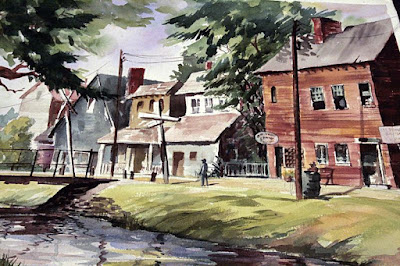From Depression to the Civil Rights Movement
1925 - Anthology The New Negro (ed.
Alain Locke), with Countee Cullen, Langston Hughes, Zora Neale Hurston. consecrates the Harlem Renaissance.
1929 - Wall Street Crash
1930s - Dustbowl (the dirty thrities)
1933-1937 - New Deal (Frank D. Roosevelt): Relief, Recovery and Reform; Roosevelt's New Deal "Farm Security Administration" (FSA) project and documentary photography
1939 - Radio Corporation of America demonstrantes television at New York Wrold's Fair
John Steinbeck, The Grapes of Wrath
1939-1945 - 2nd World War
1941 - US enters World War II (Pearl Harbour)
1950s - intensification of Cold War and McCarthysm
1955- The Montgomery Bus Boycott begins on December 5 after Rosa Parks is arrested for refusing to give up her seat to a white man on the bus.
1957- The Southern Christian Leadership Conference establishes and adopts nonviolent mass action as its cornerstone strategy to gain civil rights and opportunities for blacks. Working initially in the South under the leadership of Martin Luther King, by the mid 1960's King enlarges the organization's focus to address racism in the North.
1961- Escalation of US involvement in the Vietnam War (JFK)
1963 - March to Washington and "I have a dream" speech.
1963 - JFK murdered
1964 - Malcolm X delivers "The Ballot or the Bullet" speech, after having parted with the Nation of Islam, but still defending separatism rather than integration.
1965 - On February, Malcolm X is assassinated. On March, blacks begin a march to Montgomery in support of voting rights but are stopped at the Pettus Bridge by a police blockade. Fifty marchers are hospitalized after police use tear gas, whips, and clubs against them. The incident is dubbed "Bloody Sunday" by the media. The march is considered the catalyst for pushing through the voting rights act five months later.
1968 - Martin Luther King is murdered.
1929 - Wall Street Crash
1930s - Dustbowl (the dirty thrities)
1933-1937 - New Deal (Frank D. Roosevelt): Relief, Recovery and Reform; Roosevelt's New Deal "Farm Security Administration" (FSA) project and documentary photography
1939 - Radio Corporation of America demonstrantes television at New York Wrold's Fair
John Steinbeck, The Grapes of Wrath
1939-1945 - 2nd World War
1941 - US enters World War II (Pearl Harbour)
1950s - intensification of Cold War and McCarthysm
1955- The Montgomery Bus Boycott begins on December 5 after Rosa Parks is arrested for refusing to give up her seat to a white man on the bus.
1957- The Southern Christian Leadership Conference establishes and adopts nonviolent mass action as its cornerstone strategy to gain civil rights and opportunities for blacks. Working initially in the South under the leadership of Martin Luther King, by the mid 1960's King enlarges the organization's focus to address racism in the North.
1961- Escalation of US involvement in the Vietnam War (JFK)
1963 - March to Washington and "I have a dream" speech.
1963 - JFK murdered
1964 - Malcolm X delivers "The Ballot or the Bullet" speech, after having parted with the Nation of Islam, but still defending separatism rather than integration.
1965 - On February, Malcolm X is assassinated. On March, blacks begin a march to Montgomery in support of voting rights but are stopped at the Pettus Bridge by a police blockade. Fifty marchers are hospitalized after police use tear gas, whips, and clubs against them. The incident is dubbed "Bloody Sunday" by the media. The march is considered the catalyst for pushing through the voting rights act five months later.
1968 - Martin Luther King is murdered.



Comentários
Postar um comentário